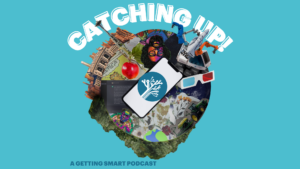6 Suggestions for Using Mentor Texts in the Classroom

This is also the part of the lesson that often gets left out—I think that I don’t have time, or that it isn’t really a necessary step. But when I do remember how effective it is to use mentor texts in class, I am reminded once again why I need to make time.
Here are my six suggestions for using mentor texts in class:
1. First, you read. I usually read out loud in class to make sure that everyone actually reads the text, and so that it is fresh in their minds when we go to discuss. In fact, I will likely reread many passages out loud a few times when we are discussing.
2. Choose a short piece. When it comes to using mentor texts to teach students about good writing, the shorter the better. Students aren’t going to be writing actual novels in class, but they will be writing personal essays, short research papers and many many individual sentences, so that’s what we read. If I can choose a very short piece to be the mentor for their writing, then we can dig into all the aspects of that text. By focusing on a well-written sentence or paragraph, we can look at everything from diction to structure to alliteration to allusion, and we can do all that in part of a class period.
3. Get their impressions first. Reading to learn as writers is something that they will ultimately be doing on their own, so I want them to learn to go with their gut. If they like the way something sounds or if it makes them uncomfortable or uneasy—I want them to recognize that reaction before anything else.
Sometimes my favorite sentence is their least favorite, but I want them to be able to explain why. Sometimes they point out flaws that I had overlooked—overwriting or vagueness or a confusing phrase or two—and they wouldn’t have felt empowered to point out those issues if I had jumped right into a lecture on the piece. This step will often happen silently so that students have time to fully form their own impressions before they jump in with the group.
4. Then get to the specifics. I always have a goal in mind—I want them to think about grabbers or how to use semi-colons or different options for structuring the essay as a whole—and I design my questions to lead them to that goal. If they notice anything else about the mentor text, that’s great too, but this is the step when they’ll need to pinpoint why the passage made them feel the way it did.
5. Push them to notice more. In my experience, students have a pretty easy time discussing author’s choices when it comes to diction. But to get them thinking about how sentence structure creates meaning takes some time. Again, having questions ready ahead of time helps me to not let them settle for the first level of analysis. Giving them time to reread and think and maybe write a little more helps as well.
6. And then you play. The whole point of mentor texts is to get students to explore and develop and stretch their own writing. Playing around with different low-pressure exercises helps them think about the possibilities of writing. What’s the use of teaching students to identify a compound-complex sentence if they can’t even write one themselves?
After spending so much time analyzing a passage, students naturally pick something up from the great writers, and by playing around with those elements, they truly internalize those lessons.
What I love most about teaching with mentor texts is that this is the kind of lesson that sticks. Because we go so deep, I can refer to a sentence that we analyzed in class months later and students will still remember it.
I couldn’t do this kind of lesson every day, but when I do, it makes a big impact.
Looking for ready-to-go mentor text lesson plans? Check out this resource which features nine mentor text passages, 55 questions to help students analyze the writer’s craft so that they can internalize the techniques in their own writing, 47 quick-write prompts and 41 thematically-arranged writing prompts and creative writing ideas based on the mentor text.
For more, see:
- Instructional Design: Inspire Students and Empower Teachers
- Top 5 Ways Teachers Can Incorporate EdTech into the Classroom
- 7 Ways Teachers Are Connecting and Collaborating Online







0 Comments
Leave a Comment
Your email address will not be published. All fields are required.